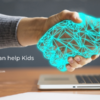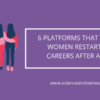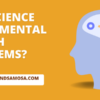Who needs a sleep app?

People who use sleep apps are ‘50% more likely to have a better night’s sleep’ – is this claim true? How can a sleep app help in improving a person’s sleep?
Let’s explore through this blog what are the benefits of a sleep app and who should be using it
What are the common types of sleep disorders and how bad it is to have a sleeping disorder?
Sleeping disorders include sleep deprivation, snoring, insomnia, obstructive sleep apnea, and narcolepsy. Lack of a healthy amount of quality sleep and various sleep disorders have been associated with an increased risk of hypertension, obesity, diabetes, and cardiac disease as well as decreased cognitive performance, decreased quality of life, increased risk of injury, and a higher risk for mortality.
Which was the first sleep app to get launched?
The first smartphone app targeted at sleep called Sleep Cycle was released in 2009, exclusively on Apple iOS devices. It was a digital alarm clock that also tracked users’ sleep patterns.
What do we mean when we talk about ‘consumer sleep technology’?
Their primary goals include sleep-induction, wake-induction, self-guided sleep assessment, entertainment, social connection, information sharing, and sleep education.
What does a consumer sleep app record?
Sleep quality: Trackers can detect interrupted sleep, letting you know when you are disturbed or waking during the night.
Sleep phases: Some tracking systems track the phases of your sleep and time your alarm to go off during a period when you are sleeping less deeply.
Environmental factors: Some devices record environmental factors like the amount of light or temperature in your room
Lifestyle factors: Some trackers prompt you to enter information about activities that can affect sleep, like the amount of coffee consumed, stress level, etc
What are the most popular types of Consumer Sleep Technology?
CSTs include mobile applications, wearables, embedded CSTs, desktop or website CSTs, and accessory appliance platforms.
Mobile apps
Mobile applications are the most popular type of CST and are used for sleep tracking, alarms, education, recording sounds, and dream logging. Disadvantages of the mobile app include reduced processing power, light, and noise, which can interfere with sleep.
Head-Mounted Devices
Head-mounted devices use straps or adhesive pads to place one or more sensors in contact with an individual’s forehead. All devices in this category include sensors for accelerometry, pulse oximetry, and measuring respiration.
Tracking Pads
This category includes stand-alone tracking pads and smart mattresses with integrated sensors to measure body position, and heart rate, and detect breathing disturbances including snoring.
Bed sensors
Bed sensors may be defined as any sensor that sits on the bed and can be used for monitoring physiological processes. Body movements, breathing, and even cardiac activities can be detected by the volume change of the pneumatic underneath an individual whilst they are lying in bed
Smartwatches and fitness trackers
A plethora of wearable smart watches and activity bands have been developed to infer sleep. These devices often derive their metrics using a combination of movement signals and heart rate and heart rate variability.
What kind of sleep apps do people prefer?
Some features people prefer most include alarms to help them wake up and stay awake, audio features, encouragement, recommendations, social features, sleep tracking, behavior tracking, and data visualization.
Usability, intuitiveness, and bug-free designs included as part of the basic expectations
Best sleep tracking apps for Android




Best sleep tracking apps for Apple iPhone






In coming years we are going to see more and more apps and alternate technologies to solve our sleep problem. All excited to see how technology will transform of sleep experience.








